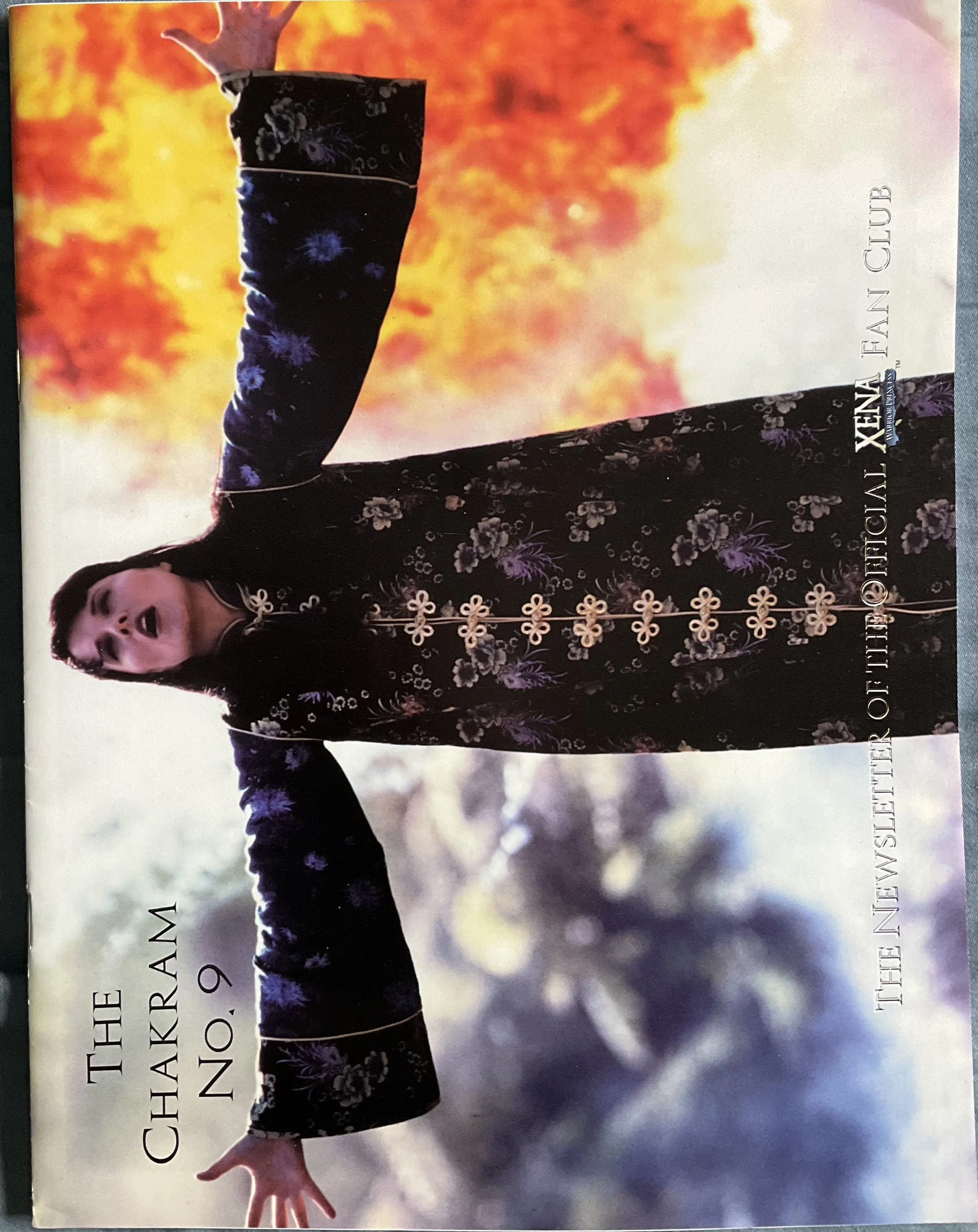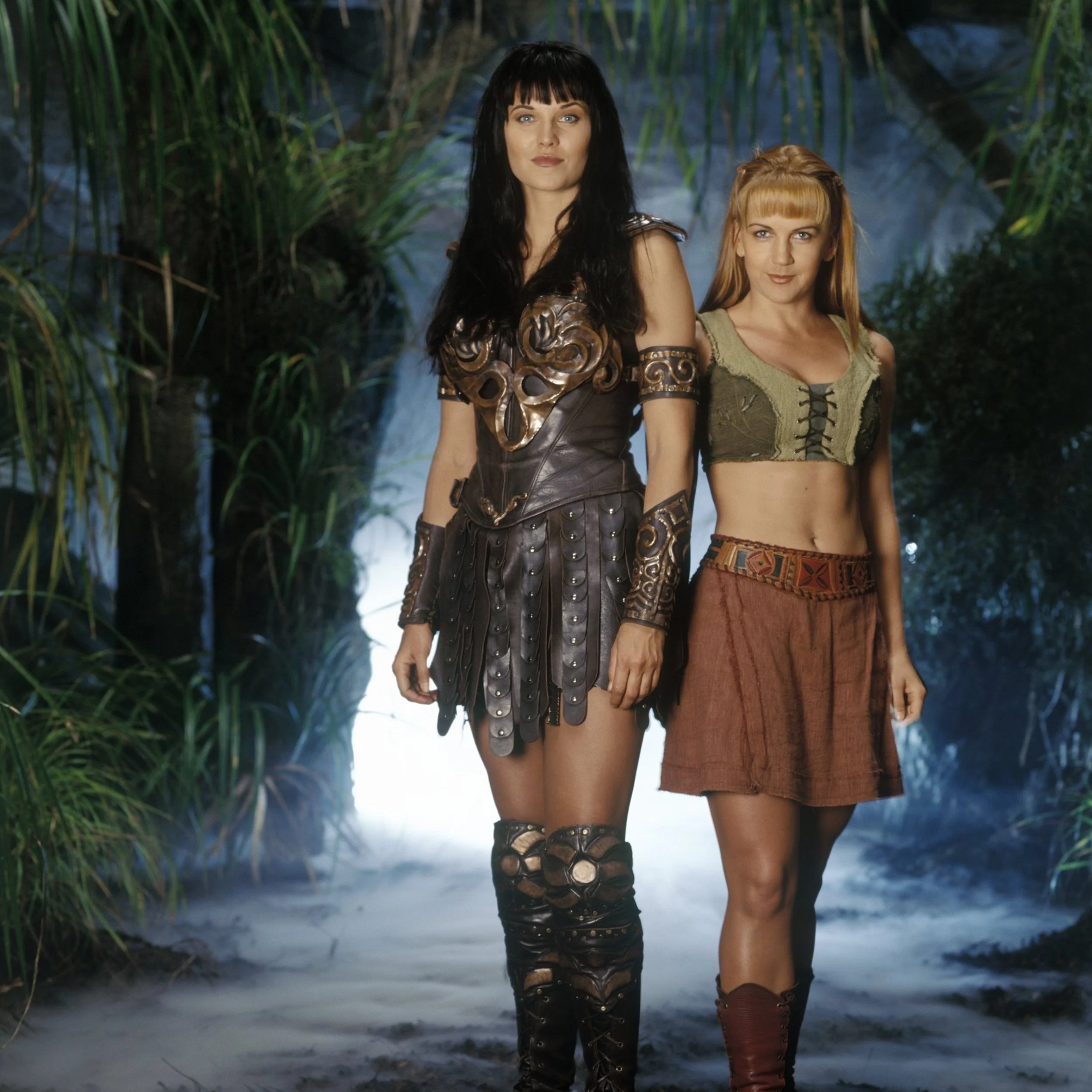Ngila Dickson
Costume Designer
The Chakram Newsletter: Issue 09
SD: I want you to know my mother is just waiting for me to tell her all about visiting this department. She's been taking me to costume exhibits at the Metropolitan Museum of Art in New York City ever since I was a young girl.
Ngila: That would be great living near the Metropolitan.
SD: Where do you start designing a costume for an original character, for example, Alti in “Sin Trade”?
Ngila: You start with the character as it's written and as it's cast. I'm really keen on knowing who the actors are who are going to play the roles because their physicality tells you a lot about where you can go with that character. In the case of Alti, the fact that she's got such a strong, masculine thread to her and that the costume had to cross over between Xena and Alti had an impact on the design. The images of shamans throughout history was where that costume came from.
I wanted Alti to be extreme. I tend to like going to the graphically extreme end of things and I think Rob Tapert and I have that in common. I focused on the ritual elements. The idea of killing a deer and taking all the parts and creating a costume that was made up of blood and skins is quite traditionally what ancient tribes would do. Things are very primitive on that level. The blood on the forehead - that type of element was really important to me.
SD: The costume changes for Gabrielle -
Ngila: (laughing)
SD (laughing): Ah, so you’ve heard the fans talk about this quite a lot. Why did the costume change every season?
Ngila: To give her more freedom and to move through the changes from village girl to warrior. It comes back to that thing about who is Gabrielle, her physicality. Renee has a fantastic body. She has the most fabulous stomach of anyone I have ever seen! And she is such a physical person - a natural athlete.
I think the first shift out of the long skirt and the little village blouse had a lot to do about how Renee felt about the character. Which is how that whole business about the sports bra happened. We wanted to show more of Renee’s physicality. And because she’s really petite, you're not left with needing much material to cover her.
SD: The actor plays a part in the design of a costume - their thoughts of how it feels, etc.?
Ngila: Oh, of course. You have to think about the fact that that person is going to be wearing that outfit every day - winter, summer, all kinds of weather.
I just don't know if anyone can conceive of what it's like for Lucy to wear a boned corset for three quarters of your life over a period of four years. They are not comfortable. You do what you can to make it easier, but it has a huge effect on your diaphragm, your posture, all sorts of things.
SD: Can you talk about the blue outfit that Xena wore in “Between The Lines”?
Ngila: I thought it was an opportunity to show the other side of Lucy’s physicality. She’s a beautiful woman, but, this past year, she's looking absolutely gorgeous! It’s one of those things that people go through as they work out who they are. And she has such a personal strength. She is just glorious at the moment and it was a chance to take off the armour and show the lifeness in her. I loved doing that.
SD: I really like some of the headpieces used on the show as in “Destiny.”
Ngila: I love headgear. We used it with Alti because Claire's got such a strong face. Lucy also looks phenomenal when her face is framed. Just incredible bones and when someone has those, you can frame it.
SD: I'm learning how fast everything is done in television. How much time do you get to work on a new costume?
Ngila: I get to read the beat sheets (paragraph synopses of each act of an episode) as the script is being developed and from that I get a feel for what's going to happen and who’s in the story. That will start circulating in my mind. Often you’ll design a costume during script read-through which takes place about two days before filming. If it’s a continuing character, you get an opportunity to fiddle with it and resolve things that felt unfinished. I often find that if the drawing is resolved, the costume's resolved. The drawing is everything to me.
SD: Ever wake up in the middle of the night with a costume idea?
Ngila: I never do it at night, but I do a lot on the weekend. You become quite disciplined about it. You can talk to people and draw at the same time. You just keep working things out.
SD: Have any changes been made to Xena's costume over the course of the series?
Ngila: Very little. We made an absolute rod for our own backs by making the breastplate out of copper. It’s such a living material, its maintenance is just colossal. But that's also one of the things that makes it film so extraordinarily well. If you went back over it again, you would say, “Forget it, don’t do that!” But we’ve managed. It's a very highly skilled person who creates Xena's armour and it takes a huge amount of time. That’s something we have to be really meticulous with in maintaining.
SD: I loved Lao Ma’s costume in “The Debt.” Those reds were luscious!
Ngila: If I have a favorite episode, it’s probably “The Debt.” It was the closest we’ve ever come to doing a film. It was a staggering feat from every department to turn that one out. Very sumptuous stuff. Even though we have a great deal of fun doing the costumes for the comedy episodes like “If The Shoe Fits,” my bent is toward the more realistic, deeper, meaner, grittier episodes.
I think one of the great things about this show is that it can hop backwards and forwards between very dark tales and Cinderella.
SD: I understand congratulations are in order. You’re leaving Xena to work on the film of The Lord of the Rings. I wish you all the best. I know they’re going to miss you here.
Ngila: I’m going to miss them. I love these people. There's no more creative bunch.


